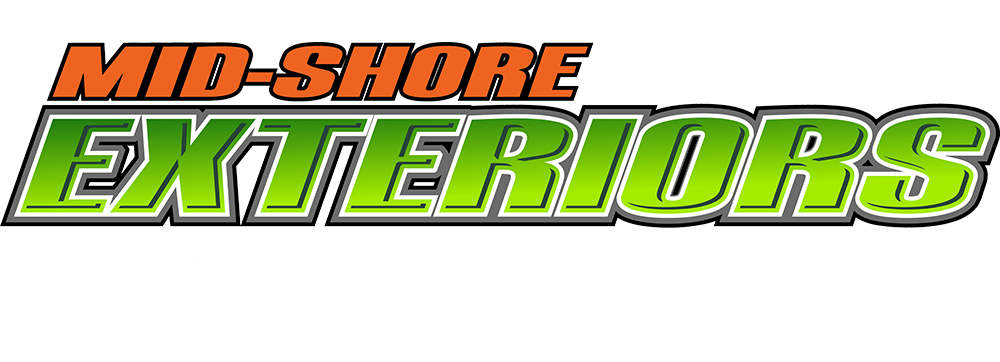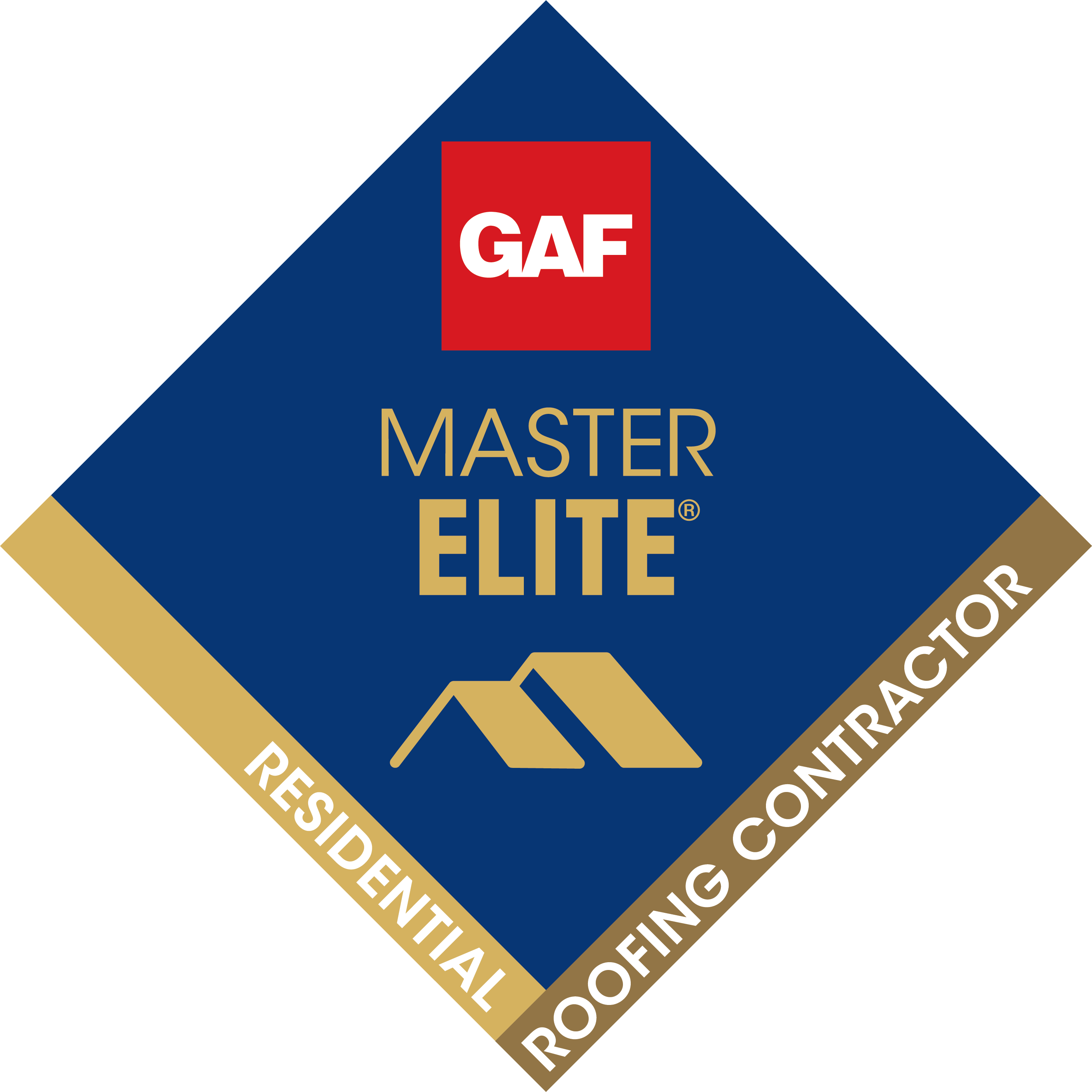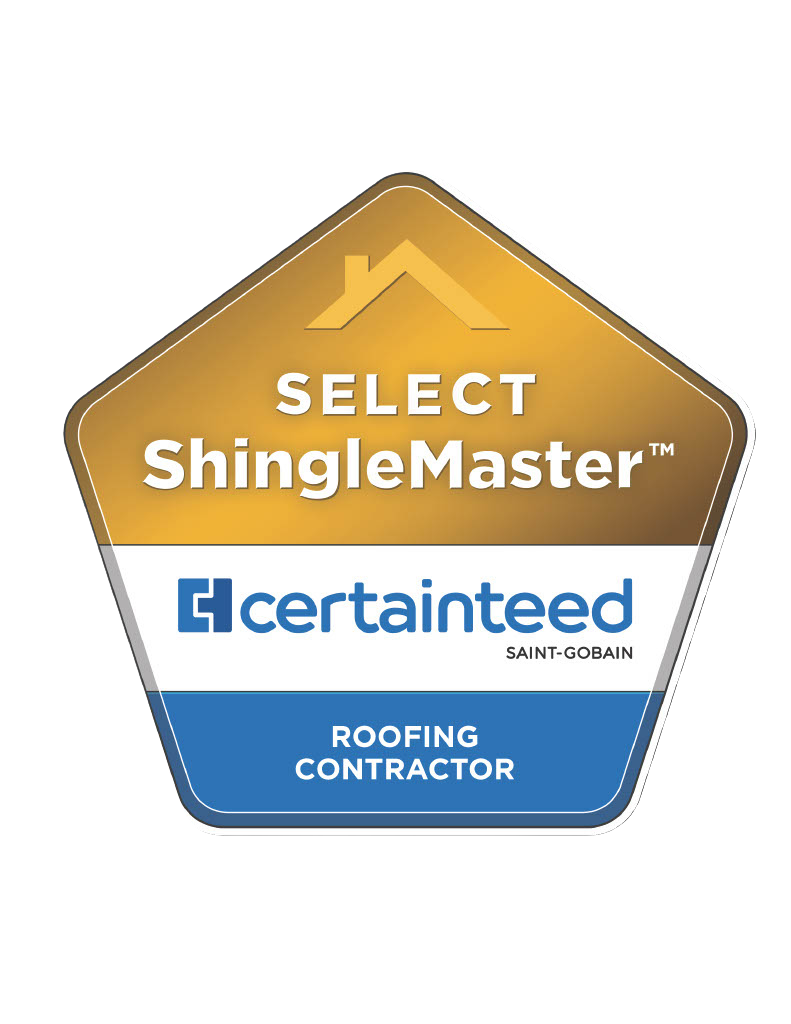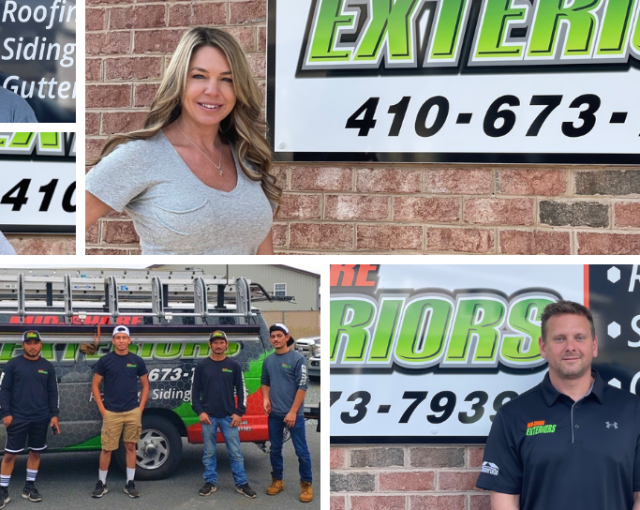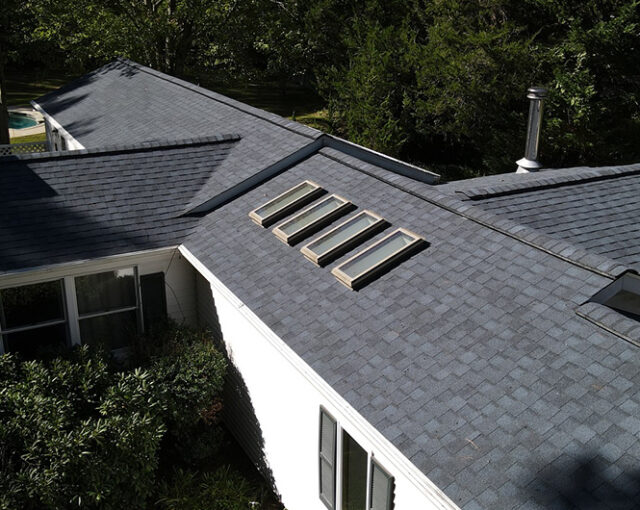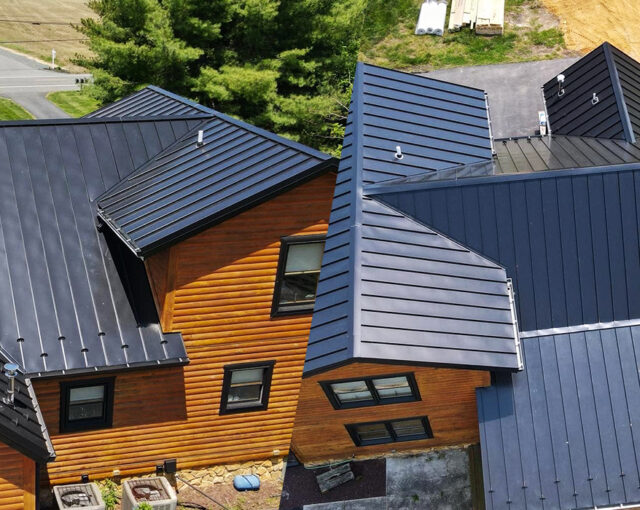Asphalt Shingles vs. Metal Roofing: Which Is Best for Maryland Homes?
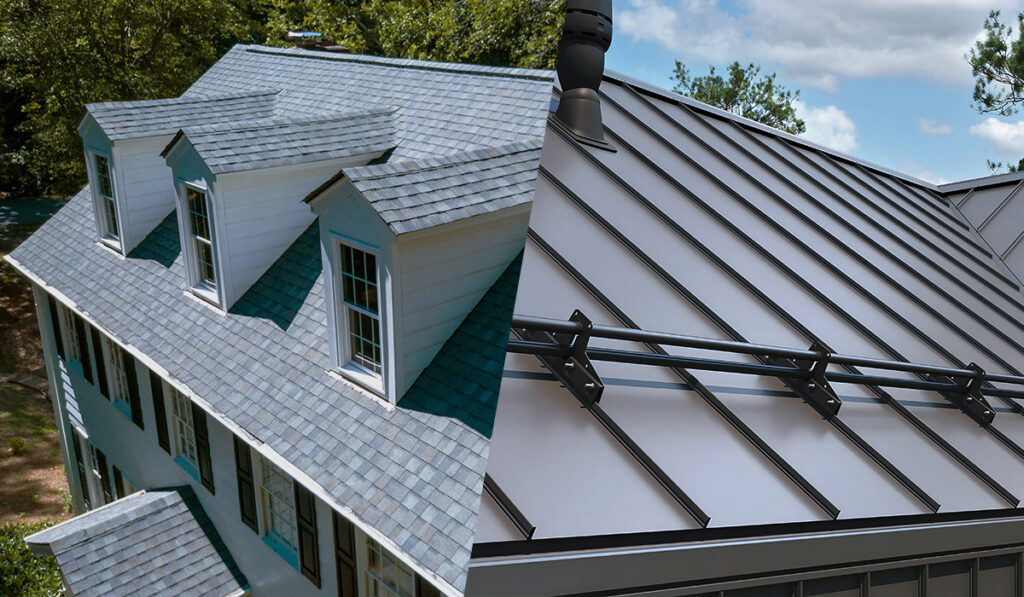
When considering whether to install a metal roof or asphalt shingles for your home, it is important to evaluate the benefits and drawbacks of both choices. Both options are popular in the roofing industry, but they cater to different needs, preferences, and budgets. When selecting the ideal option for your roofing project, it’s essential to consider important factors such as cost, durability, energy efficiency, and design choices.
Recognizing the essential distinctions between metal roofing and asphalt shingles will empower you to make a thoughtful and informed choice. Whether you’re prioritizing long-term value or upfront affordability, knowing the advantages of metal materials versus traditional asphalt shingles can guide you toward the right choice for your home improvement needs. Learn the differences between these roof types with the team at Mid-Shore Exteriors.
What Are Metal Roofs?
Metal roofs are a durable and modern roofing choice that has grown in popularity in recent years. They come in various styles, including standing seam metal, metal shingles, and metal panels, each designed to meet different aesthetic and functional needs. Standing seam roofing, for example, features concealed fasteners for a sleek, clean look, while exposed fastener systems are a more budget-friendly option. These types of metal roofs offer versatility and can be customized for different home designs.
A major advantage of metal roofing is its lightweight design, which makes installation easier on the roof deck and decreases the need for extra structural support. Their ability to resist fire enhances safety, particularly in regions vulnerable to wildfires or severe weather conditions. Metal roofs need very little maintenance, making them a great option for homeowners who want to lessen the difficulties and expenses tied to regular roof repairs.
Metal materials used in roofing often include steel roofing, aluminum, or copper, which are known for their durability and resistance to weather damage. These materials can withstand high winds, heavy snow, and even hail damage, making them ideal for regions that experience harsh weather. Metal roofs offer important energy efficiency benefits by reflecting UV rays and minimizing heat absorption. This capability helps lower energy bills and reduces cooling expenses in the long run.
What Are Asphalt Shingles?
Asphalt shingles are the most common type of roofing material in the United States, widely favored for their affordability and ease of installation. These shingles are composed of a fiberglass mat coated with asphalt and mineral granules, creating a durable and water-resistant surface. Traditional asphalt shingles are often chosen for their cost-effectiveness, making them an appealing option for homeowners on a budget.
There are several types of asphalt shingles available, including architectural shingles, designer shingles, and individual 3-Tab shingles. Architectural shingles, often referred to as dimensional shingles, are designed with greater thickness and texture, giving them a classic look. Designer asphalt shingles come in a variety of styles and add curb appeal, offering homeowners the perfect balance of durability, color options, and architectural detail to match any home design. Designer shingles can enhance the character of your home, making them a smart investment for boosting resale value. Individual 3-Tab shingles, on the other hand, provide a simpler design. Both options are commonly used in roofing projects and offer reliable performance in various conditions.
While asphalt shingles provide good protection against heavy rain and typical weather conditions, they are more prone to damage from severe weather events, including strong winds, hail, and falling branches. Over time, they may also experience issues like algae growth, water damage, and wear from UV rays, necessitating more frequent replacement compared to metal roofs. Despite these drawbacks, their widespread availability and the straightforward installation process make asphalt shingles a go-to choice for many homeowners and roofing companies.

Cost and Installation Process
Material and Installation Costs
When selecting between a metal roof and asphalt shingles, it’s essential to take the cost into account. Metal roof costs are generally higher than those of asphalt roofing, primarily due to the use of durable and long-lasting materials like steel roofing or aluminum. The material cost of a metal roof can vary widely depending on the type of metal roof selected. Additionally, metal roof installation requires specialized skills, which can increase labor costs.
In contrast, asphalt shingles are known for their affordability, making them a budget-friendly choice for many homeowners. The installation costs for asphalt roofing are significantly lower than those of metal roofs, as the materials are less expensive and the installation process is simpler. This affordability makes asphalt shingles a popular option for roofing projects where cost is a primary concern. However, it’s important to consider the long-term expenses associated with asphalt shingles, as they may require more frequent replacement and maintenance over time.
Labor costs for both roofing types can also vary based on factors such as roof pitch, the size of the roof system, and regional labor rates. In areas with higher building codes or more complex roof designs, installation costs may increase. When evaluating the overall price ranges, it’s essential to factor in both material and labor costs to determine the most cost-effective option for your needs.
Ease of Installation
The installation process is another critical aspect to consider when comparing metal roofs and asphalt shingles. Asphalt shingles are widely recognized for their ease of installation, making them a convenient choice for roofing companies and homeowners alike. Their lightweight design and straightforward installation process allow for quicker completion times, which can help reduce labor costs.
Metal roof installation is more complex and typically requires specialized expertise. The precise nature of installing standing seam metal roofs, for example, demands skilled professionals to ensure proper alignment and fastening. Exposed fastener systems are somewhat easier to install but still require attention to detail to maintain durability and weather resistance. While the installation process for metal roofs may take longer and involve higher labor costs, the long-term benefits of durability and low maintenance often outweigh these initial challenges.
Ultimately, the ease of installation will depend on your roofing project requirements, your budget, and the expertise of the roofing company you choose. Both roofing types have their advantages, and selecting the right one will largely come down to personal preference and the specific needs of your home.
Durability and Weather Resistance
How Metal Roofs Handle Weather Damage
Metal roofing is highly regarded for its remarkable strength and resilience in the face of severe weather. With impressive wind resistance, they can endure strong winds that might easily damage other roof types. This makes them an ideal choice for regions prone to hurricanes, tornadoes, or other severe weather events. Moreover, they perform exceptionally well in heavy snowfall, as their smooth surface allows snow to easily slide off, minimizing the risk of a roof collapse.
One of the standout features of metal roofs is their fire resistance. Metal materials like steel roofing and aluminum do not ignite, making them a safer option in areas susceptible to wildfires. Furthermore, they are highly resistant to hail damage, a common concern for homeowners in storm-prone areas. Unlike asphalt shingles, which can crack or dent under the impact of hail, metal roofs retain their integrity and require little maintenance in the aftermath of such events.
Metal roofs also resist water damage effectively. Their tight seams and durable construction prevent leaks, even in heavy rain. This minimizes the risk of water seeping into the roof deck and causing structural issues. With minimal maintenance needs, metal roofs reduce the long-term repair costs often associated with other roofing types. For homeowners seeking a long-lasting roofing solution that can endure extreme weather, a metal roof is a clear winner.
How Asphalt Shingles Handle Weather Damage
Asphalt shingles, while widely used, are less durable compared to metal roofs when it comes to handling weather damage. They perform adequately in moderate conditions, offering reliable protection against heavy rain. However, they are more prone to issues like water damage if improperly installed or if the roof deck becomes compromised. Over time, algae growth and UV rays can also degrade the surface of asphalt shingles, diminishing their effectiveness.
In extreme weather conditions, asphalt shingles are more vulnerable to damage. High winds and strong winds can lift or tear individual shingles, leaving the roof system exposed to further damage. Hail damage is another common issue, as the granules on traditional asphalt shingles can be knocked loose, reducing their ability to protect against water and UV exposure. Falling tree branches can also cause cracks or punctures, necessitating frequent replacement in the long run.
Asphalt shingles are not as effective as metal roofs in heavy snow, as snow tends to accumulate on the surface rather than sliding off. Adding too much weight to the roof may result in stress on the structure. While asphalt shingles are a cost-effective option for many homeowners, their shorter lifespan and higher maintenance needs make them less ideal for those seeking long-term durability.
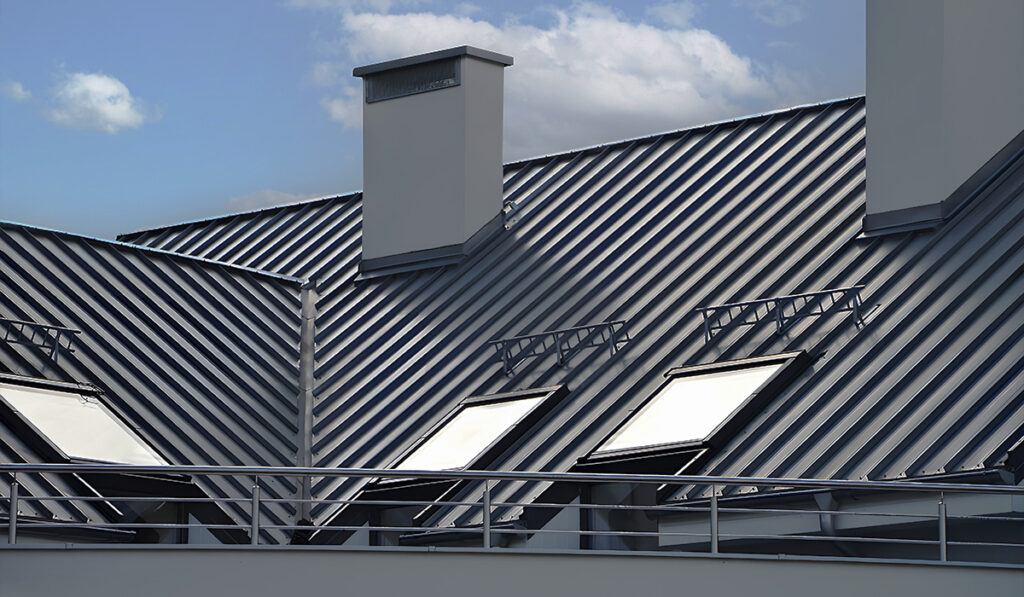
Aesthetic Appeal and Design Options
Metal Roof Design Features
Metal roofs offer a modern and sleek aesthetic that enhances a home’s curb appeal. These products are offered in a range of colors, enabling homeowners to pick a hue that enhances the look of their home’s exterior. Moreover, metal roofing options such as standing seam, metal shingles, and metal panels provide a range of design possibilities to complement different architectural styles.
Standing seam metal roofing is particularly popular for its clean, contemporary look, making it a favorite among homeowners seeking a high-end appearance. Metal shingles emulate the appearance of classic materials such as wood shakes and slate, but they offer enhanced durability. The fusion of timeless design and contemporary practicality makes metal roofs an appealing choice for numerous homeowners.
The reflective properties of metal materials contribute to energy efficiency by reducing cooling costs, while the use of recycled materials makes them a sustainable option. For homeowners looking to make an environmentally conscious decision without sacrificing style, metal roofs are an excellent choice.
Asphalt Shingle Design Features
Asphalt shingles offer a more traditional aesthetic that appeals to a wide range of homebuyers. Their classic design and availability in various types, such as architectural shingles and designer shingles, provide plenty of options for customization. Architectural shingles, in particular, are a popular choice for their dimensional appearance, which adds depth and character to a home’s roof.
The versatility of asphalt shingles allows them to blend well with other roofing types, such as clay tiles or flat roofs. This adaptability makes them suitable for various architectural styles, from traditional to modern. Homeowners can also select from a wide range of colors to match their personal preference and enhance their home’s overall look.
While asphalt shingles may not offer the same longevity or modern appeal as metal roofs, their classic appearance and affordability make them a reliable option for many roofing projects. For those prioritizing traditional charm and cost-effectiveness, asphalt shingles remain a practical and attractive choice.
Energy Efficiency and Environmental Considerations
When it comes to energy efficiency, metal roofs have a distinct advantage over asphalt shingles. Metal materials have a natural ability to reflect ultraviolet rays, which reduces heat absorption and contributes to a cooler interior temperature. This can lead to significant energy savings, particularly during the summer months, as cooling costs are reduced. Additionally, many types of metal roofs come with coatings that enhance their reflective properties, further improving energy efficiency and lowering energy bills over time.
Metal roofs are also a more environmentally friendly option compared to asphalt roofing. These items are typically constructed from recycled materials and can be completely recycled at the end of their extended lifespan, contributing to a decrease in landfill waste. This makes them a sustainable choice for homeowners looking to minimize their environmental footprint.
On the other hand, asphalt shingles are less energy efficient and sustainable. Their darker surfaces tend to absorb more heat, which can increase interior temperatures and lead to higher energy costs for cooling. Moreover, the production of asphalt shingles relies on petroleum-based materials, which are less eco-friendly. Asphalt shingles also have a shorter lifespan and require more frequent replacement, contributing to higher amounts of waste in landfills. For homeowners prioritizing energy efficiency and environmental considerations, metal roofs are often the better choice.
That said, asphalt shingles still hold appeal for their affordability and widespread availability. While they may not offer the same energy-saving benefits as metal roofs, they remain a practical option for those on a tighter budget. For homeowners seeking a balance between cost and environmental impact, considering cool roofing options or lighter-colored asphalt shingles can help improve energy efficiency to some degree.
Your Next Steps for Roofing in Easton, MD
Whether you choose the long-lasting durability of a metal roof or the cost-effective simplicity of asphalt shingles, it’s essential to select a roofing system that meets your specific needs. Metal roofs excel in energy efficiency, weather resistance, and low maintenance, making them a great choice for the long term. On the other hand, asphalt shingles are a more affordable option with easier installation, ideal for homeowners prioritizing upfront costs.
For expert advice and professional roofing services in Easton, MD, contact Mid-Shore Exteriors. With a deep understanding of roofing types, installation processes, and local building codes, their team can help you make an informed decision. Reach out through the phone number provided on their website to get started on your next roofing project and enhance your home with the perfect roofing solution.
